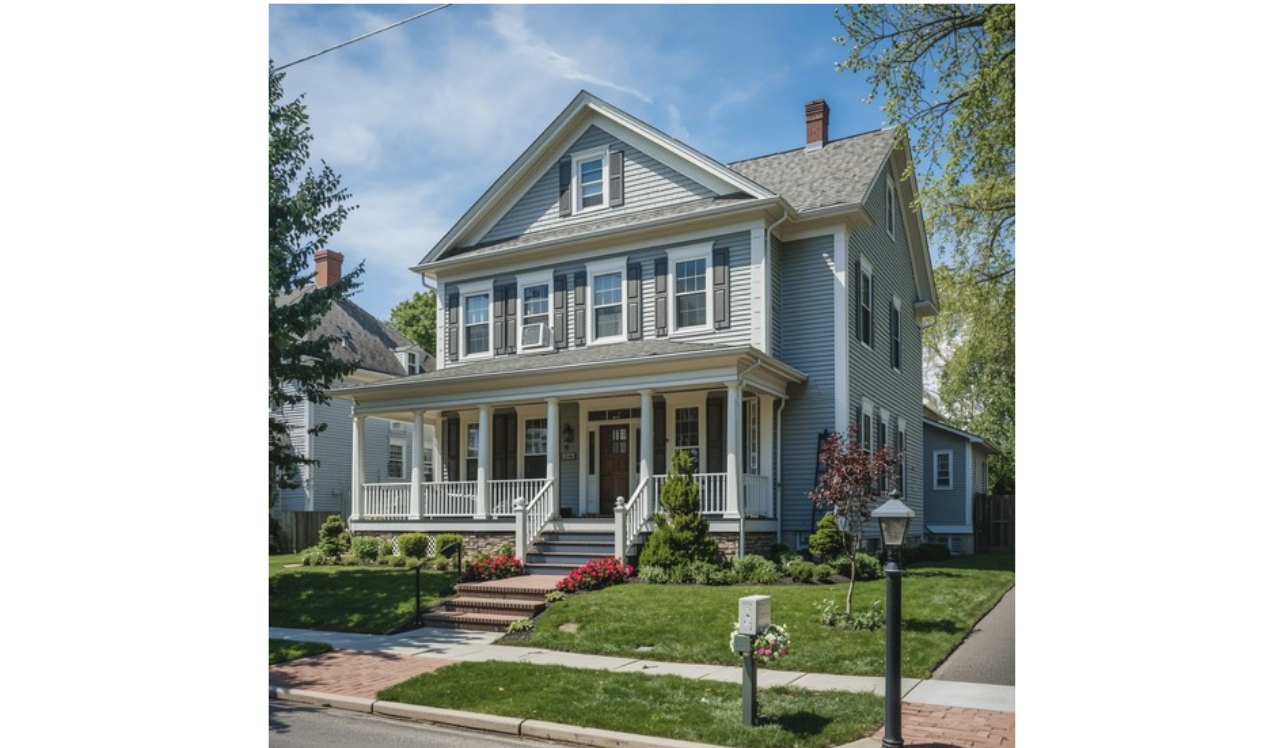Massachusetts remains one of the country’s most dynamic real-estate markets — a mix of high-cost coastal suburbs and more affordable inland cities, with strong long-term fundamentals driven by jobs, universities, and constrained housing supply. For single-family rental investors, the state presents two broad strategies: buy in high-demand, higher-price metros and target stable appreciation and tenant quality; or buy in lower-cost inland cities and chase cash flow and higher nominal yields.
Below are the Top 5 Massachusetts communities to consider for single-family rentals in 2025, with a concise investment profile for each plus the median/typical purchase price and a representative rent figure to help you triage opportunities quickly.
1) Boston — Market-leading rents, premium entry price
Median / typical purchase price: ~$785,000 (citywide Zillow Home Value Index).
Average monthly rent (market average): ~$3,200–$3,700 depending on the source / unit size.
Why Boston: Boston is the economic and cultural engine of New England — major hospitals, universities, finance, tech, and life-sciences employers create consistent housing demand from highly employable renters. Single-family rentals in desirable neighborhoods (close to transit, good schools, or near major hospitals/universities) attract professional families and faculty/staff willing to pay a premium for space and stability.
Investor profile & strategy: Expect lower cap rates (price relative to rent) than in inland markets, but greater downside protection from long-term appreciation. Best plays are: (a) small, well-maintained 3-4 bedroom houses in close-in neighborhoods that rent to families; (b) homes near transit that command steady demand; and (c) properties that can be lightly upgraded to justify rent premium. Boston is ideal for investors who value tenant quality, low vacancy, and appreciation over raw cash flow.
Risks & considerations: High entry price increases financing sensitivity — small changes in mortgage rates materially affect cash flow. Property taxes and insurance are higher in some Boston neighborhoods. Also, strong competition for turnkey single-family houses means you must underwrite aggressively and be prepared for quick decisions on good deals.
2) Worcester — A balanced metro with upside and scale potential
Median / typical purchase price: ~$430,000 (Zillow for Worcester).
Average monthly rent: ~$1,700–$2,100 depending on unit size; typical average rent reports are around $1,700–$1,900.
Why Worcester: As the second-largest city in New England, Worcester has a diversified local economy (healthcare, education, manufacturing, and services) and a growing population of renters who prefer affordability closer to Boston without the Bay Area price tag. It’s also benefited from spillover housing demand as people seek lower cost alternatives to the Boston core.
Investor profile & strategy: Worcester is attractive for investors seeking a middle ground — reasonably priced acquisitions, credible rent growth, and a large tenant pool including hospital and university staff. Single-family homes here often yield better cap rates than Boston; smaller houses and duplex conversions (where zoning allows) can be effective. Focus on established neighborhoods with stable schools and reasonable commute options into job centers.
Risks & considerations: Some neighborhoods in Worcester have more rental turnover and higher maintenance needs; localized due diligence is essential. Work with local property managers who understand tenant screening and municipal regulations.
Bottom line: Worcester offers a compelling balance of affordability and demand, making it a solid “value + growth” market for single-family rental portfolios.
3) Springfield — Lower entry points, good yield potential
Median / typical purchase price: ~$293,000 (Zillow Home Value Index for Springfield).
Average monthly rent: ~$1,200–$1,700 (market averages and HUD fair-market comps place typical rents near $1,200 for smaller units; larger SFHs command higher rents).
Why Springfield: Springfield (western Massachusetts) has among the lowest purchase price points of the top markets in the state. That makes it a prime market for investors targeting cash flow and the ability to scale quickly — you can buy multiple properties here for the price of one in Boston.
Investor profile & strategy: Best suited for yield-hungry investors who plan to operate a modestly scaled portfolio and are comfortable with slightly higher operational intensity (tenant turnover, hands-on management, or a strong property manager). Single-family homes near hospitals, community colleges, and stable employment centers perform reliably. Rehabbing houses into clean, safe units with modest upgrades often unlocks strong rent multiples.
Bottom line: Springfield is a classic cash-flow market — lower purchase prices, reasonable rents, and the potential to build a diversified single-family portfolio fast. You trade some appreciation superiority for immediate yield.
4) Lowell — Transit-oriented value with steady demand
Median / typical purchase price: ~$477,000 (Zillow for Lowell).
Average monthly rent: ~$1,800–$2,000 market average (reports typically show rents around $1,900).
Why Lowell: Lowell is a northern-suburb/metropolitan node with good commuter links into Boston (MBTA commuter rail), a growing local economy, and relatively lower prices than Boston and some inner suburbs. It attracts young professionals, small families, and commuters — a tenant mix that favors single-family rentals.
Investor profile & strategy: Target single-family properties within easy reach of transit and downtown Lowell. Properties that offer off-street parking and 3 bedrooms are highly marketable. Lowell is a good choice for investors who want access to the Boston employment market without Boston’s entry cost, and who want tenants who are less transient than in purely student towns.
Bottom line: Lowell blends commuter convenience, rent strength, and moderate purchase prices — a solid play for buy-and-hold single-family investors who want commuter demand without Boston prices.
5) Quincy — Premium suburbs with strong rental demand near Boston
Median / typical purchase price: ~$667,000 (Zillow ZHVI for Quincy).
Average monthly rent: ~$2,500–$2,800 market average (reports show Quincy's rental averages north of $2,500).
Why Quincy: Quincy is a mature Boston suburb with direct MBTA access, strong schools in many neighborhoods, and a coastal lifestyle that attracts families and professionals. Its proximity to Boston’s employment centers makes it one of the more recession-resilient rental markets in the region.
Investor profile & strategy: Quincy is optimal for investors who want suburban demand and are able to buy at premium prices for correspondingly stable rents and low vacancy. Single-family homes near the Red Line / commuter rail and near top schools rent quickly. Consider 3-4 bedroom homes as family rentals; they typically enjoy longer tenancies.
Bottom line: Quincy is a suburban, transit-rich option offering stable tenant demand and premium rents — a buy for investors prioritizing low vacancy and tenant quality over high initial yields.
How to Compare These Markets: Simple Underwriting Rules
Compute GRM and a conservative cap rate — GRM = Purchase Price ÷ (Annual Rent). Lower GRM = more attractive initial multiple. Cap rate ≈ (Net Operating Income ÷ Purchase Price). Use conservative vacancy (5–8%), and substract taxes, insurance, maintenance, and management (20–40% of rent as a rough rule, depending on local costs).
Stress test sensitivity to rates — Massachusetts prices are rate-sensitive. Model at least two rate scenarios (e.g., current mortgage rate ±1.5%) to see debt service stress.
Local tenant demand matters more than state averages — a well-priced 3-bed home near transit/schools in Quincy or Lowell will beat a poorly located property in any market.
Factor management & maintenance — urban/core markets may charge higher property management fees but generally offset that with lower vacancy; lower-cost markets require more hands-on maintenance.
Exit strategy — appreciate how much of your return depends on appreciation vs. cash flow and have contingency plans (convert to long-term rental, sell to local investors) if markets soften.
Massachusetts presents a spectrum of single-family rental opportunities: Boston and Quincy deliver tenant quality and rent strength but require significant capital; Worcester and Lowell give a balanced middle path; Springfield offers bargain entry and better cash-flow potential. Your choice should match your investment goals (growth vs. cash flow), risk tolerance, and operational capacity.


